With tonari we’re attempting to solve the curse of distance: the fact that humans are built to be together, and yet we often live and work apart. Travel has gotten safer and faster, but is still costly, time-consuming, and stressful for our bodies and environment. Video calls offer convenience, but they don’t facilitate enough empathy, creativity, or trust. The idea for tonari portals — with their floor-to-ceiling size, ultra low latency, and natural eye-to-eye contact — is to make people in two locations feel like they’re really together in-person.
Our mission is to overcome physical distance as a barrier to emotional closeness. This isn’t just important for families, it’s also crucial for teams, researchers, leaders, and humanitarians. Through years of research and development, we’ve engineered and refined hardware and software from the ground up to be over 10-times faster and higher fidelity than all other video communications. We’ve also packaged this technology into a seamless and elegant design that is natural and universal: tonari portals are as intuitive for toddlers and the elderly as they are for students, teachers, executives, and co-workers.
We believe portals provide a generational leap in quality and experience over video calls, and they are already providing great value in more than 40 locations and for thousands of people worldwide. Companies across Japan and Southeast Asia use tonari to overcome language and cultural barriers, and improve hiring and retention abroad. Startups and businesses are using portals to expand globally, access new markets and partners, and reduce business travel and emissions. Universities, incubators, and co-working spaces use tonari to strengthen communities, share more, and spark new collaboration. In health and elderly care, tonari can support emotional connection for long-distance families, improve training for nurses and staff, and expand access to specialists in remote areas.
Our goal is to make tonari portals ubiquitous over time, and today we’re making two major product announcements that will help bring tonari to many more places: a free-standing option to enable fast and easy setup of tonari without construction; and location hopping for instantaneous travel between tonari portals.
mono: our new free-standing option
Until recently, tonari has always been attached to a wall to integrate seamlessly with the architecture of a space, so that two locations can feel like they’re simply connected. The portal creates an extension into another room, like it’s just next-door through the wall. This arrangement works well for offices, open areas, and meeting rooms where a wall is available. But tonari would benefit far more people if it could be a bit more flexible. So we’ve worked on a free-standing option for tonari that allows it to be set up anywhere, even without attaching to a wall.
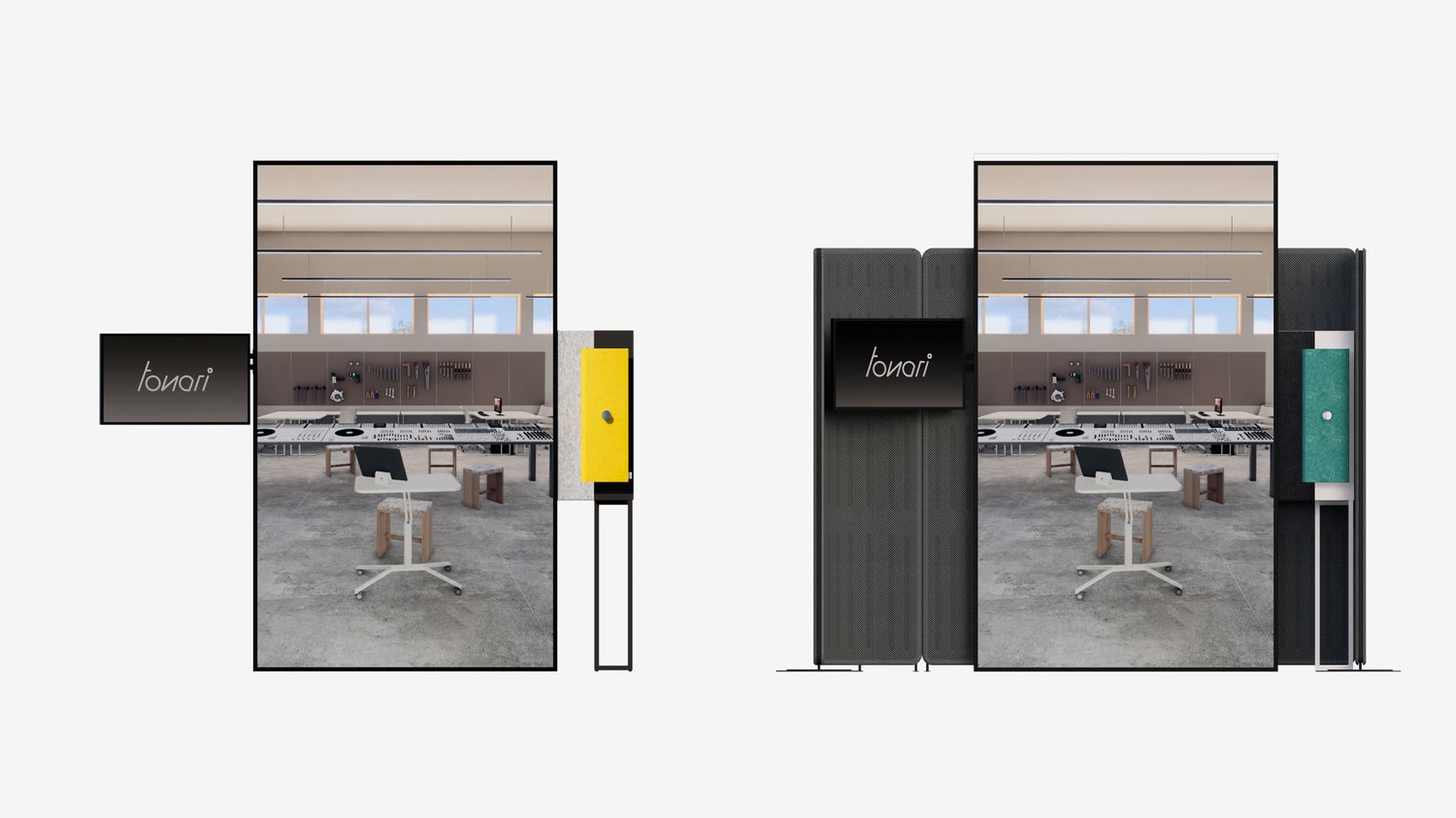
We call it mono because it means “one” in Latin, “thing” in Japanese, and it allows tonari to stand alone as a singular object. With mono, tonari can be setup free-standing in any open space.
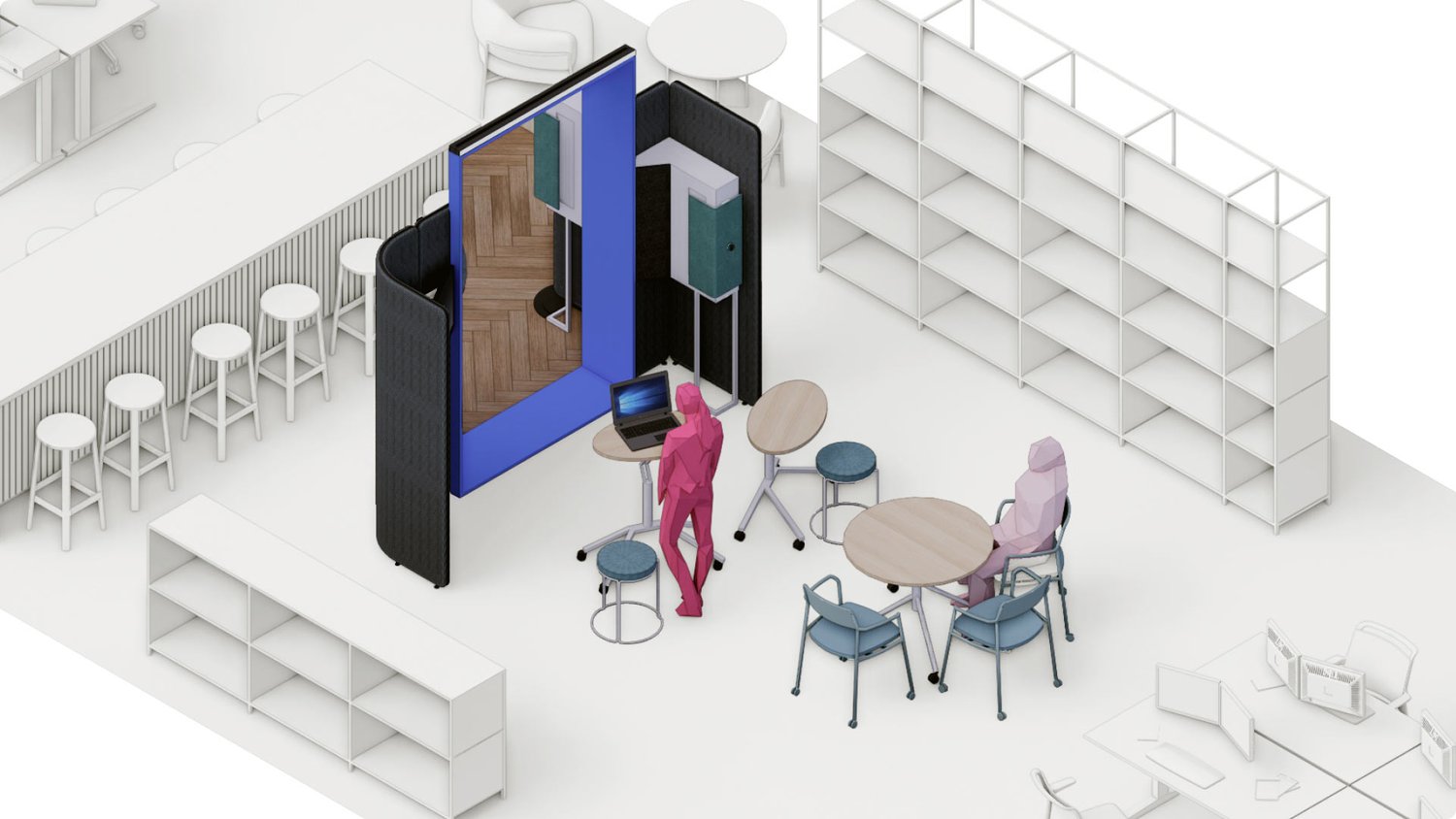
The mono booth option includes additional panels behind, and can be used to create a cozy meeting area with more visual and acoustic separation from its surroundings.
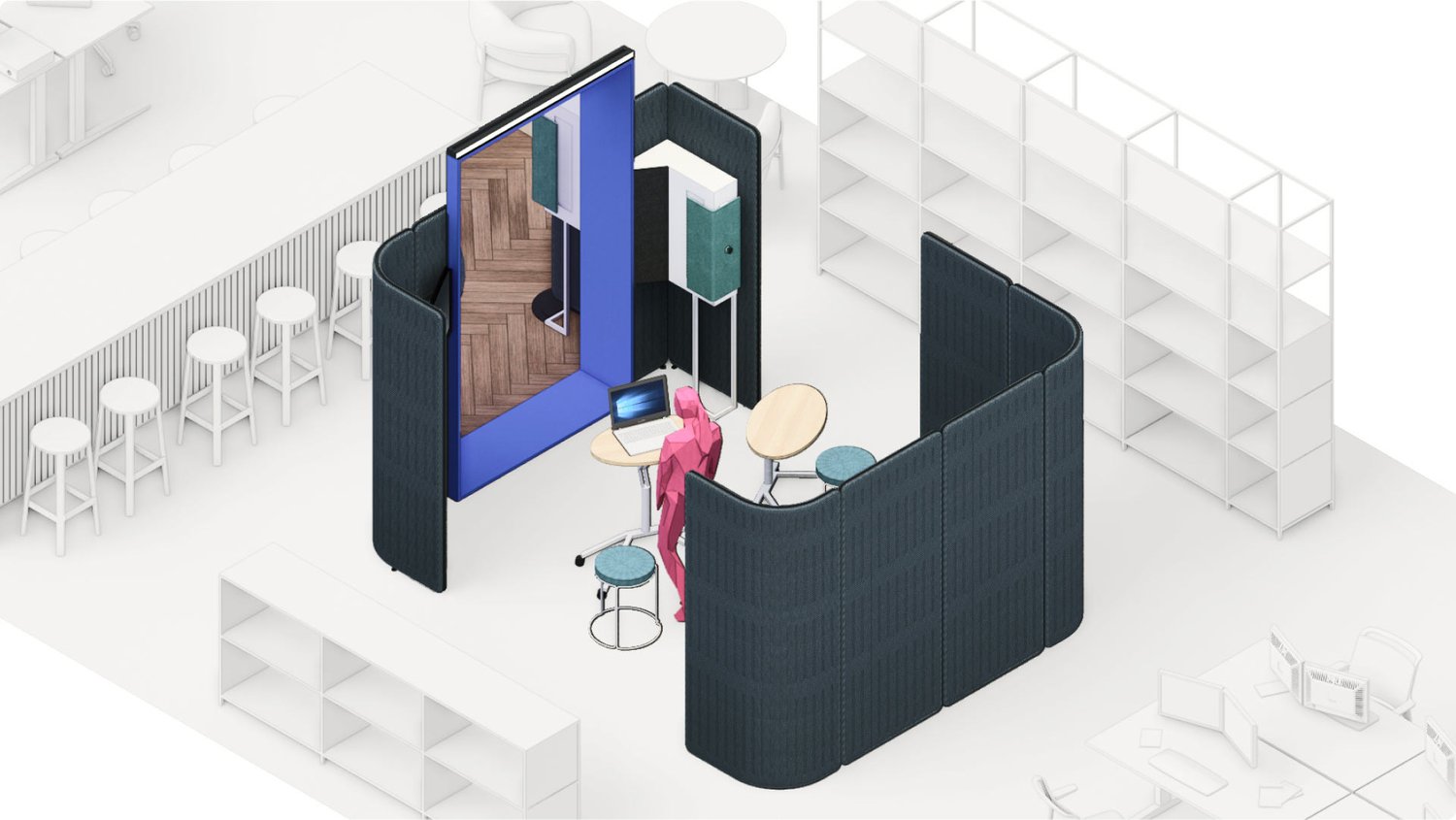
By adding mono, tonari can be set up and broken down wherever it’s needed to be used: just bring power and a wired internet connection. This not only makes tonari more useful for institutions under transformation, but also opens up new uses: emergency workers at remote sites, expos and events, and low-cost pilot and trial programs.
To support both free-standing and wall-attached setups, all tonari portals also now include a new integrated linear light. This eliminates the need for installing any overhead lights, saving time and costs during setup, while still ensuring balanced lighting in the active area in front of tonari’s camera for better image quality at all times of day.
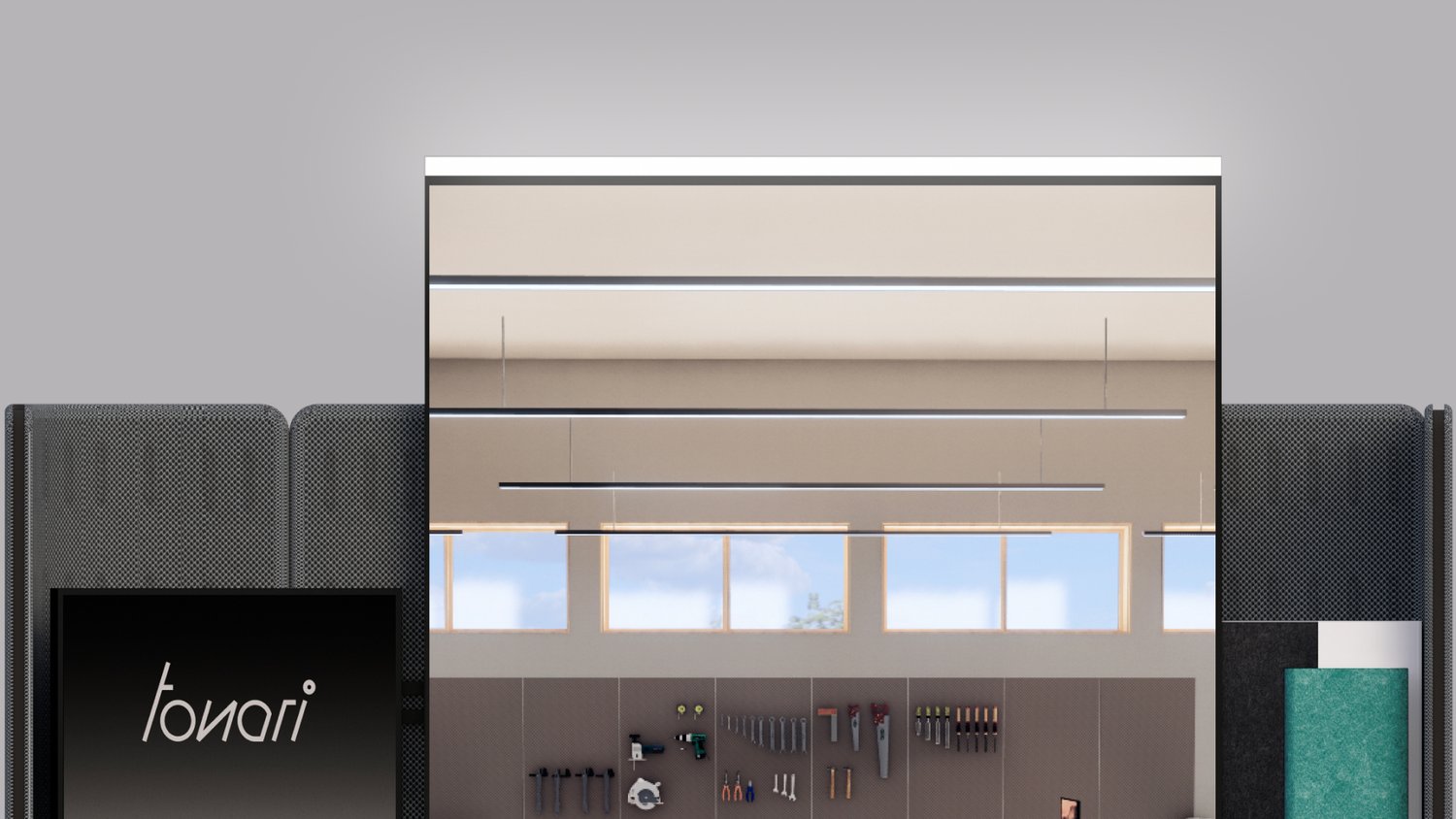
mono comes in a variety of colors, and is available now for delivery Japan, the U.S., and more than 40 countries across Asia, Europe, Oceania, and North America.
Location hopping: instantly travel across portals
While mono brings tonari to more places, we’re also adding a new software feature to all tonari portals called location hopping that allows you to instantly travel to other portals with a quick turn of the dial. Just select location, and choose where you want to go.
With location hopping, organizations can build internal networks to connect distributed teams and resources. For example, a large company in manufacturing, technology, or finance can connect their many global offices to enable executives, managers, and colleagues to instantly travel between locations. Not only can tonari help to reduce travel costs and related CO₂ emissions, portals also provide far more convenience and connectivity than physical travel could ever allow. An executive could, at any time, hop into a room with an overseas partner, client, or hiring candidate. A manager can be present and in-person with their remote team every day, instead of once per month or quarter. And remote colleagues can of course easily collaborate, organize project kick-offs, quickly share updates and check-in, and support each other like being in the same office.
While location hopping makes jumping to other locations easy, tonari also still supports always-on connectivity for teams and groups that benefit from casual co-location, serendipity, unplanned collaboration. When a portal hops somewhere else, leaving a portal behind, our matchmaker kicks in to automatically find another open portal in the network. This can be configured for the preferences of each portal and their affinity, to ensure connections are helpful and enjoyable and not surprising or distracting. Research shows us that transparency and frequency of interactions improve trust and engagement. This may be why 94% of surveyed users agree that tonari creates feelings of unity and one-team across offices.
Beyond internal networks, multiple organizations can also link and form group networks, with additional layers of privacy and control to manage connections. For example, with Leave a Nest, Center of Garage, and UntroD we’re already seeing collaboration between co-working spaces, incubators, and investment firms across Japan and Southeast Asia who work together in an ecosystem to support innovation across startups and larger corporates. Meanwhile, as a group of startups, we’ve been sharing our own portals and office spaces between tonari and Normal Lab to help each other grow, while also sharing our networks for business development. We imagine group networks could be equally valuable for partnering universities and research institutes, organizations promoting international commerce and collaboration, or consultancies and agencies with their long-term clients.
Like all of tonari’s other communications, location hopping is handled with the utmost care for security and privacy. tonari’s portals communicate entirely peer-to-peer, with no proxy-servers, via encrypted tunnels using WireGuard. Connections between peers are managed via our open-sourced private network system innernet, and communication within in the network is controlled at the level of each portal and organization. With a philosophy rooted in security through simplicity, and a team with strong backgrounds in networking and encryption, we strive to make tonari the most secure and robust video communication system in the market.
New opportunities in professional services and education
Location hopping and the free-standing mono option will immediately allow organizations to utilize multiple tonari portals in many new and different arrangements. In the near future, we believe these features also open up a wider range of applications for tonari.
Consultants in finance, technology, law, and all kinds of industries and business operations — and many other experts, creatives, and service providers — will be able to hop to different clients throughout the day, or pop up free-standing portals in client war rooms for more intensive project sprints and multi-week collaborations.
Speakers, instructors, tutors, and global experts could visit offices and schools around the world, with co-working spaces, libraries, and community centers acting as additional public spaces to bring access to more knowledge and services in remote towns.
In collaboration with many organizations and spaces, tonari portals will create more diverse and high quality opportunities for childhood and adult education, and improve the quality of human services in all manners of consulting, coaching, therapy, and care.
Visit our new website to get started
In making tonari more useful for more places, we also want to make it much easier to purchase. Our website has been updated to include these new features, along with new videos, renders, and case studies. We’ve also added a new walkthrough video, a quick guide for space and network requirements, and an easy way to contact us and get started.
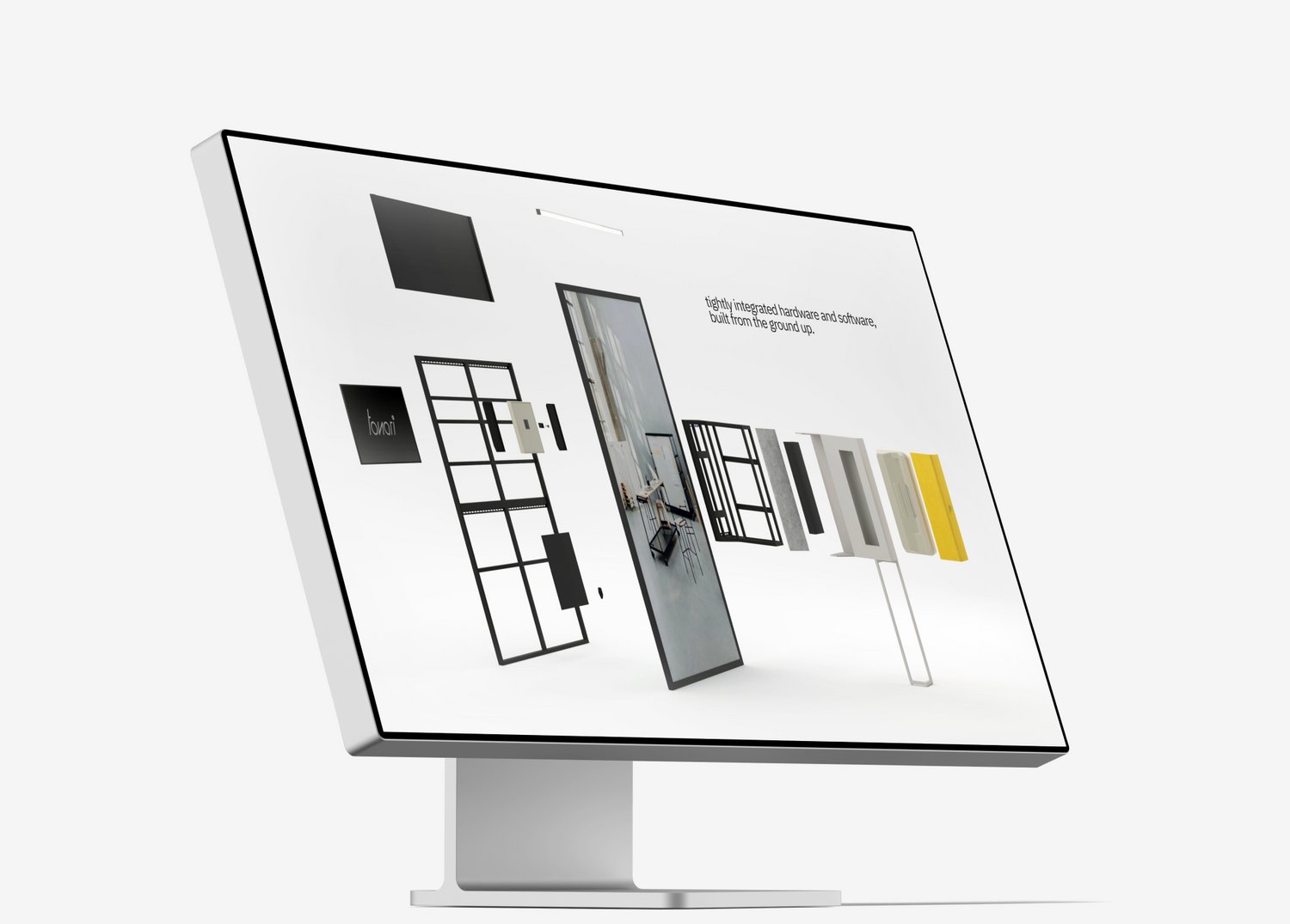
For those who have been following us for a while, tonari lite is now just tonari — our newest flagship product, easier than ever to setup, and available immediately worldwide with or without the mono option. tonari pro, its bigger sibling, will also remain available on request for organizations seeking a larger version.
Please visit our website for more information, and feel free to contact our team for a quick consultation, demo, or any other inquiry.

If you enjoyed this and want to learn more about tonari, please visit our website and follow our progress via our monthly newsletter. And if you have questions, ideas, or words of encouragement, please don't hesitate to reach out at hey@tonari.no. 👋
Find us 💙
Facebook: @heytonari Instagram: @heytonari X: @heytonari